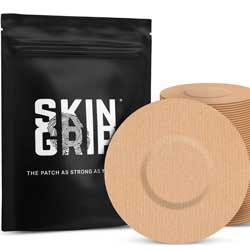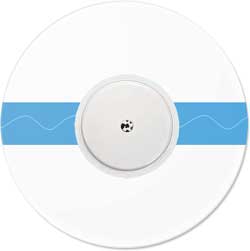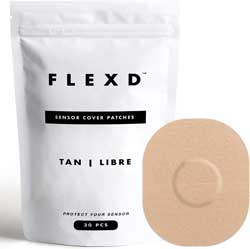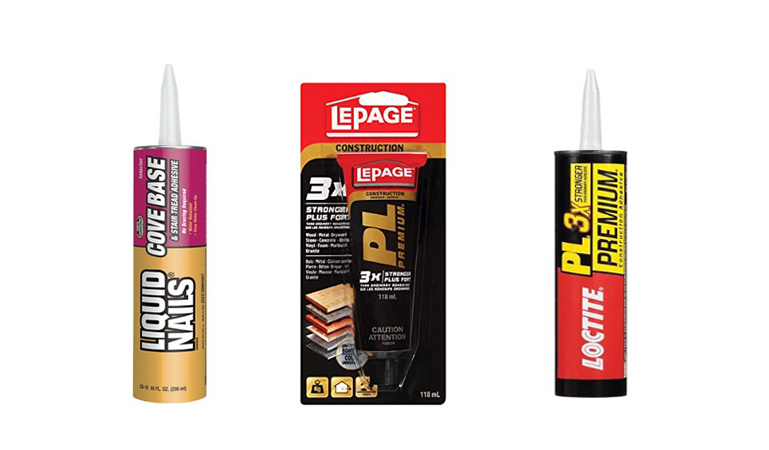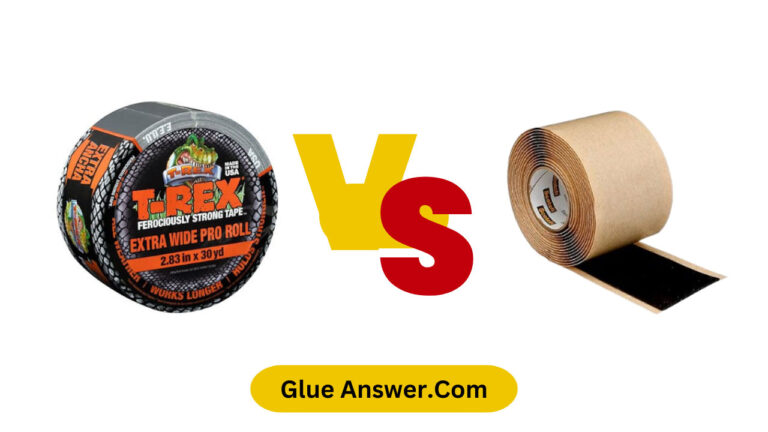The Ultimate Guide To The Best Freestyle Libre Adhesive Patches
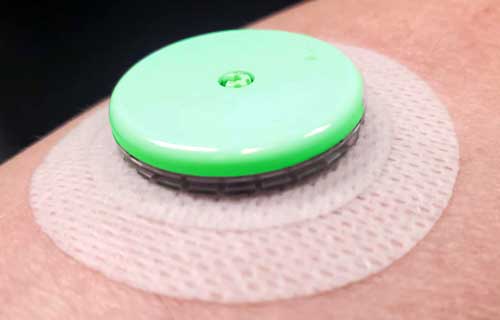
When it comes to managing glucose levels with the Freestyle Libre continuous glucose monitoring (CGM) system, finding the best adhesive patches is essential.
These adhesive patches not only enhance the sensor’s adhesion and longevity but also provide comfort and reliability for individuals with diabetes.
In this guide, we will explore the top options and features to help you discover the best Freestyle Libre adhesive patches that suit your needs and preferences.
Whether you’re seeking superior adhesion, stylish design, or skin-friendly options, we’ve got you covered.
Comparison Table
| Feature | Skin Grip Adhesive Patches | Fixic Freestyle Adhesive Patch | HECHUAN Freestyle Sensor Covers | HONYOU Medical Adhesive Patches | FixiC Freestyle Adhesive Patches | Skin Grip Adhesive Patches | Flexd Freestyle Adhesive Patches |
| Compatibility | Freestyle Libre 2 | Freestyle Libre 2 | Libre 1/2 | Freestyle Libre 2/3 | Libre 1, Libre 2, Enlite, Guardian | Freestyle Libre 2 | Freestyle Libre |
| Color Variety | Yes | Yes | No | No | No | Yes | Yes |
| Pre-Cut Design | Yes | Yes | No | Yes | Yes | Yes | Yes |
| Waterproof & Sweatproof | Yes | Yes | Yes | Yes | Yes | Yes | Yes |
| Skin-Friendly Material | Yes | Yes | No | Yes | No | Yes | Yes |
| Quantity per Pack | – | – | 55 covers per pack | 40 patches per pack | – | – | 30 patches per pack |
Also Read: 3m Adhesive Remover Vs Goo Gone
1. Skin Grip Adhesive Patches for Freestyle Libre
Continuous glucose monitoring is a critical aspect of managing diabetes, and ensuring the secure attachment of the sensor is paramount.
In this review, we delve into the Skin Grip Adhesive Patches designed specifically for the Freestyle Libre 2 sensor. This product boasts an array of features that promise enhanced durability and user convenience.
Key Features:
Waterproof and Sweatproof
Perhaps the most significant advantage of these adhesive patches is their exceptional resistance to water and sweat.
They are designed to maintain a secure bond even during vigorous physical activities, swimming, or exposure to humid conditions.
This feature ensures the Freestyle Libre 2 sensor remains firmly attached to the skin, providing consistent and accurate readings throughout the recommended wear period.
Pre-Cut Adhesive Tape
The patches come pre-cut, simplifying the application process. Users don’t need to bother with scissors or worry about achieving the correct dimensions for the sensor. This feature streamlines the application and guarantees a precise fit for the sensor.
Extended Wear Duration
Skin Grip claims these patches can last for 10-14 days, and they seem to deliver on this promise. This extended wear duration not only reduces the need for frequent sensor replacements but also minimizes inconvenience and expense.
Skin-Friendly Material
The patches are composed of a hypoallergenic and latex-free material, promoting skin comfort and reducing the risk of irritation or allergic reactions. This is particularly important for individuals with sensitive skin.
Variety of Colors
While my evaluation was based on the tan-colored patches, Skin Grip offers a range of colors to match different skin tones or personal preferences, ensuring users can discreetly secure their sensor.
Pros:
- Exceptional adhesion, even during intense physical activities.
- Pre-cut design for easy and precise application.
- Long-lasting, reducing the need for frequent replacements.
- Hypoallergenic and latex-free material for skin-friendliness.
- Available in a variety of colors to match different skin tones.
Cons:
- Initial cost may be higher compared to generic alternatives.
2. Fixic Freestyle Adhesive Patch
In the realm of diabetes management, the secure attachment of a continuous glucose monitor is paramount. Enter the Skin Grip Adhesive Patches, tailor-made for the Freestyle Libre 2 sensor.
In this comprehensive review, we’ll explore the noteworthy features, advantages, and drawbacks of these patches, empowering you to make an informed choice.
Key Features:
Waterproof & Sweatproof
Engineered to resist water and sweat, these patches ensure the Freestyle Libre 2 sensor stays securely in place, even during strenuous activities or adverse weather conditions.
Pre-Cut Adhesive Tape
Skin Grip simplifies installation with its pre-cut design, eliminating the need for cutting or resizing and guaranteeing a precise fit every time.
Extended Wear Duration
Promising a wear time of 10-14 days, these patches reduce the frequency of sensor replacements and the associated costs.
Skin-Friendly Material
Crafted from hypoallergenic and latex-free material, these patches prioritize user comfort by minimizing the risk of skin irritation or allergic reactions.
Variety of Colors
Offering a spectrum of colors, including tan, the patches cater to different skin tones and personal preferences, ensuring discreet sensor attachment.
Pros:
- Skin Grip patches boast remarkable adhesive strength, ensuring the sensor remains steadfastly in place, even during rigorous physical activities.
- The thin, flexible, and breathable material guarantees comfort during extended wear, without causing any bulkiness or discomfort on the skin.
- Thanks to the pre-cut design, installation is a breeze, enhancing user-friendliness and reducing the chances of installation errors.
- With a longer wear duration, users ultimately spend less on replacements, translating into significant cost savings over time.
Cons:
- While the quality and durability are undeniable, the initial purchase price may exceed that of generic alternatives.
3. HECHUAN Freestyle Sensor Covers for Libre
The Freestyle Sensor Covers for Libre 1/2 are a vital accessory for users of the FreeStyle Libre glucose monitoring system.
Designed to protect and enhance the performance of the Libre sensors, these adhesive patches have gained popularity for their durability, waterproof capabilities, and transparent design. In this review, we will delve into the features, pros, and cons of this product.
Key Features:
Waterproof Design
The waterproof design of these sensor covers is a game-changer for users who want to continue their daily activities without worrying about sensor detachment or damage during water-related activities like swimming or showering.
Transparent Tape
The transparent tape not only ensures that the sensor’s readings are not obstructed but also blends seamlessly with the skin, making it discreet and less noticeable. This is a significant advantage for users who prefer to keep their glucose monitoring discreet.
Large Pack
One of the standout features of this product is the generous quantity of 55 sensor covers per pack.
This quantity provides excellent value for money as it can last for an extended period, reducing the need for frequent reordering.
Long-Lasting
These adhesive patches are designed to last, reducing the chances of early sensor detachment. This extended longevity can save users money by preventing the need for frequent replacements.
Pros:
- The Freestyle Sensor Covers provide excellent adhesion, ensuring that the sensor stays securely in place, even during rigorous physical activities.
- The transparent tape blends well with the skin, making it less conspicuous.
- With 55 covers in a single pack, this product offers excellent value for money.
- No glue on the center so that the sensor will remain intact.
Cons:
- A few users with sensitive skin have reported mild skin irritation or discomfort when using these covers.
Read More About: Krazy Glue Vs E6000
4. HONYOU Medical Adhesive Patches for Freestyle Libre
The 40-Pack Latex-Free Medical Adhesive Patches for Freestyle Libre 2/3 offer a range of features designed to enhance the user experience and protect CGM sensors.
Their latex-free composition, precise design, absence of adhesive in the center, waterproof properties, and strong adhesion make them a practical choice for Freestyle Libre 2/3 users.
Key Features:
Latex-Free Material
These adhesive patches are made from latex-free materials, making them suitable for users with latex allergies or sensitivities. This feature ensures broader compatibility and reduces the risk of skin irritation.
Precut Design
Each patch is precut to fit perfectly around Freestyle Libre 2/3 sensors. The precision-cut design simplifies the application process, eliminating the need for users to manually cut patches to size.
No Glue in Center
A standout feature of these patches is the absence of adhesive in the center. This design choice prevents the adhesive from coming into contact with the sensor’s insertion point, reducing the risk of sensor interference or damage.
Waterproof
These patches are designed to be waterproof, providing reliable protection for the sensor during activities like swimming, showering, or heavy sweating. This waterproof feature helps maintain the accuracy of CGM readings.
Strong Adhesion
The adhesive used in these patches is known for its strong stickiness, ensuring that the patches stay securely in place for an extended period. This is crucial for users who lead active lifestyles or have concerns about patch detachment.
Pros:
- The latex-free material is a significant advantage for users with latex allergies or sensitivities, making these patches accessible to a broader user base.
- The absence of adhesive in the center of the patches reduces the risk of sensor interference and potential damage to the sensor’s insertion point.
- These patches are designed to be waterproof, allowing users to engage in water-related activities without concerns about patch detachment or sensor inaccuracy.
Cons:
- These patches are specifically designed for Freestyle Libre 2/3 sensors and may not fit other CGM systems. Users of different CGM brands will need to seek alternatives.
5. The FixiC Freestyle Adhesive Patches
The FixiC Freestyle Adhesive Patches have been gaining popularity in the world of diabetes management, specifically for users of the Libre 1, Libre 2, Enlite, and Guardian continuous glucose monitoring (CGM) systems.
These pre-cut, waterproof adhesive patches aim to provide a reliable and long-lasting solution for securing CGM sensors, offering users peace of mind and enhanced convenience.
In this in-depth review, we will explore the features, pros, and cons of the FixiC Freestyle Adhesive Patches.
Key Features:
Compatibility
One of the standout features of the FixiC Freestyle Adhesive Patches is their compatibility with various CGM systems, including Libre 1, Libre 2, Enlite, and Guardian. This versatility makes them a convenient choice for users of different monitoring systems.
Pre-Cut Design
These adhesive patches come pre-cut, which eliminates the need for users to trim or modify them to fit their sensors.
This pre-cut design simplifies the application process, saving valuable time and reducing the chances of errors during installation.
Waterproof and Durable
The FixiC Freestyle Adhesive Patches are designed to withstand daily wear and tear. They are waterproof, ensuring that users can go about their daily activities without worrying about the adhesive losing its effectiveness due to exposure to water, sweat, or other liquids.
Secure Fixation
The primary purpose of these adhesive patches is to provide a secure and long-lasting fixation for CGM sensors.
Users can trust that their sensors will stay in place, reducing the risk of inaccurate readings caused by sensor displacement.
Pros:
- The pre-cut design and strong adhesive backing make it incredibly easy to apply the FixiC patches to your CGM sensor.
- Provide long-lasting adhesion.
- The waterproof feature is a game-changer for individuals who lead active lifestyles.
- It is compatible with multiple CGM systems is a significant advantage, as it allows users to switch between systems without needing different adhesive solutions.
Cons:
- Some users might find the FixiC Freestyle Adhesive Patches relatively more expensive compared to generic adhesive solutions.
6. Skin Grip Adhesive Patches for Freestyle Libre
The Skin Grip Adhesive Patches for Freestyle Libre 2 are gaining recognition as an exceptional solution for individuals managing their glucose levels with the Freestyle Libre 2 continuous glucose monitoring (CGM) system.
Offering an array of features, these pre-cut adhesive patches promise to provide both long-lasting sensor protection and a touch of personal style.
In this comprehensive review, we will delve into the features, pros, and cons of the Skin Grip Adhesive Patches.
Key Features:
Compatibility
The Skin Grip Adhesive Patches are specifically designed for use with the Freestyle Libre 2 CGM system. This specialized compatibility ensures a precise fit and optimal sensor coverage.
Color Variety
With a range of nine vibrant colors, Skin Grip patches offer users an opportunity to personalize their CGM experience.
This feature is especially appealing to those who want their sensors to complement their style or mood.
Pre-Cut Design
The patches come pre-cut, eliminating the need for users to trim or customize them to fit their sensors.
This user-friendly design simplifies the application process, reducing the risk of errors during installation.
Waterproof and Sweatproof
These patches are built to withstand various environmental conditions. They are both waterproof and sweatproof, enabling users to engage in water-related activities and workouts without worrying about the patches losing their adhesive properties.
Extended Wear Time
Skin Grip boasts an impressive wear time, with many users reporting that a single patch can securely hold their sensor in place for 10 to 14 days, which aligns perfectly with the typical sensor wear period.
Pros:
- Superior adhesion ensures reliable and secure sensor fixation.
- Easy application with pre-cut design and strong adhesive backing.
- Stylish color variety allows for personalization and expression.
- Durable performance leads to extended wear time, potentially reducing long-term costs.
Cons:
- Potential for skin irritation for individuals with sensitive skin, necessitating a patch test before extensive use.
7. Flexd Freestyle Adhesive Patches
Flexd Freestyle Adhesive Patches have emerged as a popular choice among individuals managing their glucose levels with Freestyle Libre continuous glucose monitoring (CGM) systems.
With 30 pre-cut patches per pack and a tan color option, Flexd offers users an effective way to enhance sensor security while maintaining a discreet appearance.
In this comprehensive review, we will explore the features, pros, and cons of the Flexd Freestyle Adhesive Patches.
Key Features:
Perfectly Tailored Fit:
Flexd Adhesive Patches are meticulously designed to seamlessly match the Freestyle Libre CGM system’s sensor, ensuring an ideal fit that hugs the sensor for maximum protection against accidental dislodgement.
Tan Tone Integration
These patches offer a subtle and clever solution for users who appreciate aesthetics, as they blend harmoniously with your skin tone, allowing you to confidently wear your CGM sensor without drawing undue attention.
Streamlined Application
The patches come pre-cut and are equipped with a robust adhesive backing, simplifying the application process for a frustration-free experience. Achieve a secure, precise fit with minimal fuss.
Long-Term Performance
Many users attest to the patches’ exceptional durability, allowing them to securely hold the Freestyle Libre sensor in place for an extended period—typically lasting between 10 to 14 days—aligning seamlessly with the sensor’s recommended wear time.
Pros:
- Exceptional adhesion for secure sensor fixation.
- Easy and hassle-free application.
- Discreet tan color option for an inconspicuous appearance.
- Cost-efficient due to extended wear time.
Cons:
- Potential for mild skin irritation in sensitive individuals, requiring a patch test.
Also Read: Krazy Glue Vs Dermabond
What is Freestyle Libre?
The Freestyle Libre is a popular continuous glucose monitoring (CGM) system developed by Abbott Laboratories for individuals with diabetes.
It is designed to help people with diabetes better manage their blood glucose levels by providing continuous and real-time data without the need for frequent fingerstick tests.
What Are Freestyle Libre Adhesive Patches?
Freestyle Libre adhesive patches are specially designed adhesive covers or patches used to secure and protect the Freestyle Libre continuous glucose monitoring (CGM) sensor.
These patches are typically made from medical-grade adhesive material and are pre-cut to fit the sensor precisely.
Why Are Adhesive Patches Essential For Freestyle Libre Users?
Here are the reasons why adhesive patches are essential for Freestyle Libre users.
- Secure the Sensor: Freestyle Libre sensors are attached to the skin, and the adhesive patches help keep them firmly in place, reducing the risk of accidental dislodgement.
- Extend Sensor Wear Time: Adhesive patches can prolong the wear time of the sensor, which is typically 10 to 14 days. This can be particularly beneficial for users who want to maximize the use of each sensor.
- Protect the Sensor: The patches provide an additional layer of protection for the sensor, shielding it from external elements such as water, sweat, and friction, which can affect its accuracy and longevity.
- Enhance Comfort: Some users find that adhesive patches add an extra layer of comfort by reducing skin irritation and sensitivity caused by direct contact with the sensor’s adhesive.
Also Check: Battle of Adhesives
Benefits Of Using Adhesive Patches
Using adhesive patches, particularly in the context of medical devices like continuous glucose monitors (CGMs), offers several benefits:
Secure Attachment:
Adhesive patches provide a reliable and secure attachment method for medical devices. They help prevent accidental dislodgement or shifting of the device, ensuring that it stays in place as intended.
Extended Wear Time:
Adhesive patches can extend the wear time of medical devices. For example, in the case of CGMs, they can help users keep their sensors in place for the recommended wear duration, which can be up to two weeks or more.
Protection:
Patches provide an additional layer of protection for the device. They shield it from external factors like water, sweat, friction, and environmental contaminants, which can affect its accuracy and longevity.
Comfort:
Some individuals may find that adhesive patches enhance comfort by reducing skin irritation or sensitivity caused by direct contact with the device’s adhesive. The patch acts as a barrier between the skin and the device.
Skin Health:
Adhesive patches, especially those designed with medical-grade materials, are typically gentle on the skin.
They can minimize the risk of skin irritation or allergic reactions, which can be a concern with some medical adhesives.
Customization:
Many adhesive patches come in various sizes, shapes, and colors, allowing users to personalize their medical devices to match their preferences or style.
Convenience:
Using adhesive patches can simplify the application and removal of medical devices. They often come pre-cut and ready to use, reducing the need for additional cutting or modification.
Cost-Effective:
While adhesive patches themselves may have a cost, they can contribute to cost savings in the long run by prolonging the life of medical devices. This can reduce the frequency of replacements and the associated expenses.
Improved Accuracy:
By ensuring that the medical device stays securely in place, adhesive patches contribute to more accurate and reliable data.
This is particularly important for devices like CGMs, where accuracy is crucial for diabetes management.
Discreetness:
Some adhesive patches are designed to be discreet, allowing users to wear their medical devices with confidence and without drawing undue attention.
Also Read: Tape For Ostomy Bags
Factors to Consider When Choosing Adhesive Patches
When choosing adhesive patches, especially for medical or personal use, several important factors should be considered to ensure that you select the right product for your needs. Here are some key factors to keep in mind:
Compatibility:
Ensure that the adhesive patches are compatible with the specific medical device or application for which you need them. Different devices may require different patch sizes and shapes, so make sure they match.
Adhesive Material:
Consider the type of adhesive material used in the patches. It should be medical-grade and hypoallergenic to minimize the risk of skin irritation or allergic reactions, especially if you have sensitive skin.
Durability:
Assess the durability of the adhesive patches. They should be able to withstand daily wear, including exposure to water, sweat, and other environmental factors, to ensure long-lasting adhesion.
Wear Time:
Determine how long the adhesive patches are designed to stay in place. Some patches are intended for short-term use, while others can last for several days or even weeks. Choose patches that align with your device’s recommended wear time.
Ease of Application:
Look for adhesive patches that are user-friendly and easy to apply. Pre-cut patches and those with a strong adhesive backing simplify the application process, reducing the chances of errors during installation.
Removability:
Consider how easy it is to remove the adhesive patches without causing discomfort or skin damage. Patches that offer easy and painless removal are preferable.
Skin Sensitivity:
If you have sensitive skin, prioritize patches that are specifically designed to be gentle on the skin. Conduct a patch test before extended use to check for any adverse reactions.
Customization:
Some adhesive patches come in various sizes, shapes, and colors, allowing you to personalize your medical device or make it more discreet. Choose patches that offer the customization options you prefer.
Cost:
Compare the cost of different adhesive patches, but also consider their value in terms of how they enhance the lifespan and performance of your medical device. Sometimes, investing in higher-quality patches can lead to long-term cost savings.
Tips For Extending Sensor Life With Adhesive Patches
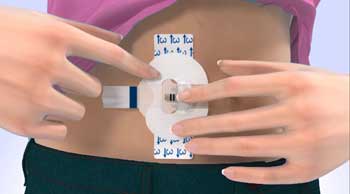
Extending the life of your medical sensor, such as a continuous glucose monitor (CGM), with adhesive patches is a practical way to make the most of your device.
Here are some tips for maximizing sensor longevity with adhesive patches:
Ensure Clean Skin:
Before applying the sensor and adhesive patch, thoroughly clean the skin with mild soap and water. Ensure that the skin is dry before application to promote better adhesion.
Apply Properly:
Follow the manufacturer’s instructions for applying both the sensor and the adhesive patch. Make sure there are no air bubbles or wrinkles under the patch that could compromise adhesion.
Use Skin Prep Wipes:
Some users find that using a skin prep wipe (provided with some adhesive patches) can help improve adhesion and extend sensor life. These wipes create a clean surface and may enhance the adhesive’s grip.
Avoid Lotions and Oils:
Be cautious with lotions, oils, or creams on the skin around the sensor site, as they can interfere with adhesion. Apply these products away from the sensor site or after sensor application.
Trim Body Hair:
If you have hair in the area where you apply the sensor, consider trimming it to create a smoother surface for the adhesive to adhere to. However, be cautious not to irritate the skin.
Secure the Edges:
Pay extra attention to securing the edges of the adhesive patch. Edges are often the first areas to lift, so make sure they are well-pressed down to maintain a tight seal.
Avoid Excessive Moisture:
While many adhesive patches are waterproof, prolonged exposure to moisture, such as extended swimming or soaking in hot tubs, can weaken adhesion. Dry the area carefully after such activities.
Be Gentle When Removing:
When it’s time to replace the sensor, remove the adhesive patch and sensor gently to avoid skin irritation. Pulling too forcefully can damage the skin and make future adhesion more challenging.
Also Read: Sikaflex 505 vs 221
Advice For Handling Allergies Or Skin Sensitivities
Handling allergies or skin sensitivities, especially when using medical devices like adhesive patches or sensors, is crucial to ensure your comfort and well-being. Here’s some advice for managing allergies or skin sensitivities effectively:
Patch Test:
If you have a history of skin allergies or sensitivities, always perform a patch test before using a new adhesive patch or medical device.
Apply a small piece of the patch to a less sensitive area of your skin and monitor for any adverse reactions, such as redness, itching, or irritation. If you experience a reaction, avoid using that specific product.
Choose Hypoallergenic Products:
Seek out medical-grade adhesive patches and products labeled as hypoallergenic. These are designed to minimize the risk of allergic reactions and are less likely to contain common allergens.
Rotate Application Sites:
If you use medical devices regularly, like continuous glucose monitors (CGMs) or insulin pumps, rotate the application sites.
Repeatedly applying devices to the same area can lead to skin sensitivity or irritation over time. Alternating sites gives the skin a chance to recover.
Keep Skin Clean and Dry:
Maintain good hygiene by regularly cleaning the skin where you apply medical devices. Use mild soap and water to clean the area and ensure it is thoroughly dry before attaching a new device or patch.
Moisturize Skin:
Keep your skin well-moisturized with a hypoallergenic, fragrance-free moisturizer. Moisturized skin is less likely to become dry, cracked, or irritated, which can improve comfort when using adhesive products.
Frequently Asked Questions About Best Freestyle Libre Adhesive Patches
1. How Can I Make My Libre Sensor Stick Better?
To improve adhesion, ensure your skin is clean and dry before applying the Libre sensor. You can also use adhesive patches specifically designed for Libre sensors for added security.
2. What Should I Cover My Libre Sensor With?
You can cover your Libre sensor with compatible adhesive patches or tape designed for medical devices. These patches help keep the sensor securely in place.
3. Where Are The Best Spots For Libre Sensor?
Common locations for the Libre sensor are the back of the upper arm or the thigh. Consult with your healthcare provider for personalized placement recommendations.
4. Can Freestyle Libre Be Covered With Tape?
Yes, you can use medical-grade tape or adhesive patches to cover and secure your FreeStyle Libre sensor. It can help improve adhesion and extend sensor wear time.
5. What To Do If Libre Sensor Falls Off?
If your Libre sensor falls off prematurely, clean the area, reapply it following proper hygiene steps, and consider using an adhesive patch for added security. If issues persist, contact Abbott customer support.
6. Why Is My Freestyle Libre Sensor Not Sticking?
Poor adhesion may result from skin oils or moisture. Clean and dry the area before application or use adhesive patches.
7. What Type Of Adhesive Is Used For The Freestyle Libre?
FreeStyle Libre sensors use medical-grade adhesive designed to be gentle on the skin.
8. Which is more accurate, the Libre sensor or a fingerstick?
The Libre sensor is typically accurate but may vary. Confirm with occasional fingerstick tests if needed.
9. Can I Put My Libre Sensor On My Stomach?
Yes, the stomach is a suitable location for the Libre sensor, but follow placement recommendations.
10. Can I Go Through Airport Scanner With Libre Sensor?
Airport scanners shouldn’t affect the Libre sensor. Inform security personnel about it if necessary.
11. Can I Take A Bath With My Libre Sensor?
The FreeStyle Libre sensor is water-resistant, but prolonged soaking may affect adhesion. Pat dry gently after bathing.
12. Can I Cover My Freestyle Libre With Tegaderm?
Yes, Tegaderm or similar medical tapes can be used to secure and protect the Libre sensor.
13. Do I Need To Cover My Freestyle Libre Sensor When Showering?
While it’s water-resistant, additional protection like a waterproof adhesive patch is advisable for extended exposure to water.
14. Why Do Libre 2 Sensors Fail?
Sensor issues can result from various factors, including sensor placement, skin preparation, or sensor defects.
15. Can Freestyle Libre Last Longer Than 14 Days?
No, the manufacturer recommends replacing the sensor every 10 to 14 days for optimal accuracy.
16. Why Does My Freestyle Libre Burn?
Burning sensations are uncommon. If you experience discomfort, consult your healthcare provider or Abbott customer support.
17. Is Libre Sensor Waterproof?
The Libre sensor is water-resistant and can withstand exposure to water. Avoid prolonged soaking for best results.
18. How Do I Remove Freestyle Libre Patch?
Gently peel it off, starting from one edge. Avoid pulling forcefully to minimize skin irritation.
19. What Are Libre Patches?
Libre patches are adhesive covers designed to secure and protect FreeStyle Libre sensors for extended wear.
20. What Are Useful Tips For Sensor Wear?
Keep skin clean, dry, and free from lotions or oils. Use adhesive patches for added security, and rotate sensor sites.
21. Why Does My Libre 2 Sensor Hurt My Arm?
Discomfort can result from sensor placement or skin sensitivity. Ensure proper placement and consult a healthcare provider if pain persists.
22. What Are The Improvements To The Libre 2 Sensor?
Libre 2 offers optional real-time alarms for high and low glucose levels, enhancing user alerts and convenience.
23. Can The Freestyle Libre Sensor Be Placed On The Stomach?
Yes, the stomach is a suitable site for the FreeStyle Libre sensor, along with other recommended locations.
Conclusion
In conclusion, finding the best Freestyle Libre adhesive patches can greatly improve your experience with the continuous glucose monitoring system.
These patches offer enhanced adhesion, extended wear time, and added comfort, contributing to more reliable and hassle-free glucose monitoring.
Whether you prioritize durability, skin-friendliness, or personalization, the variety of options available ensures that you can find the perfect adhesive patches to meet your specific needs.

